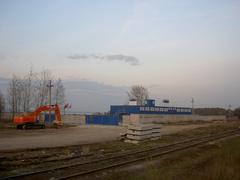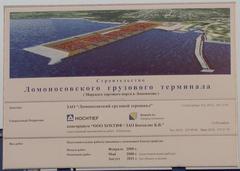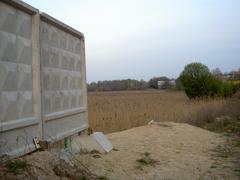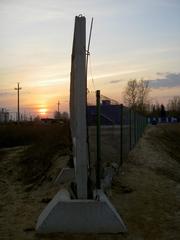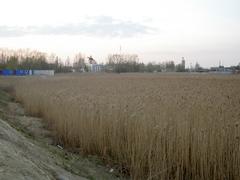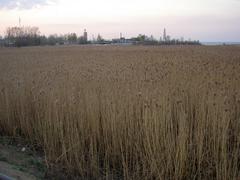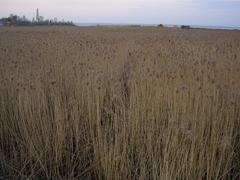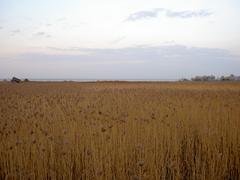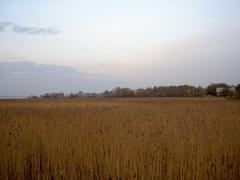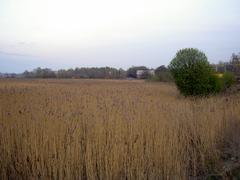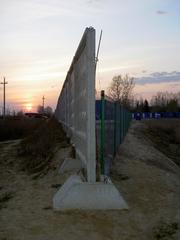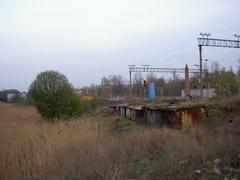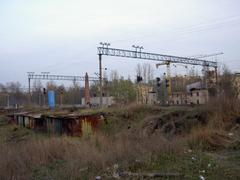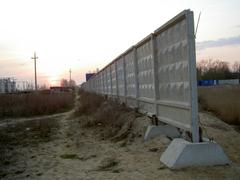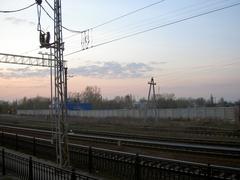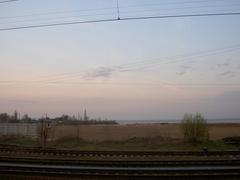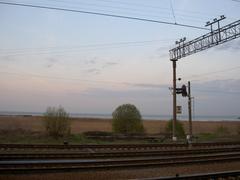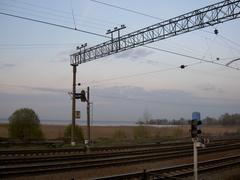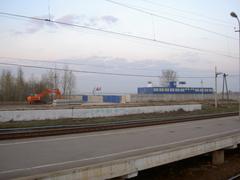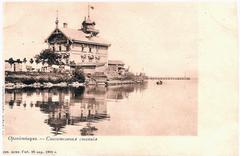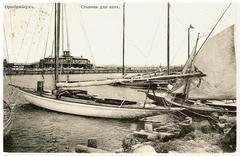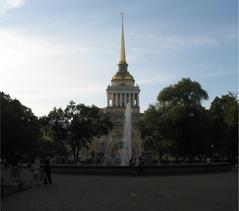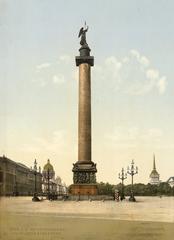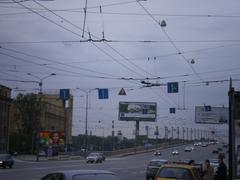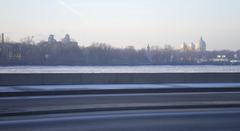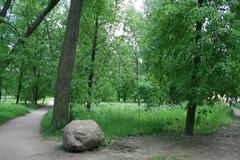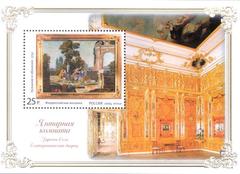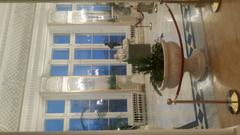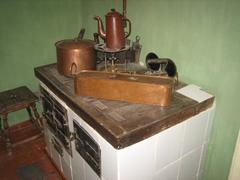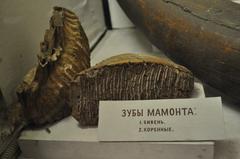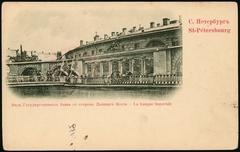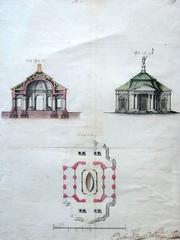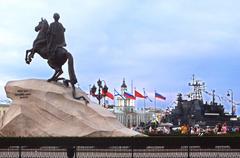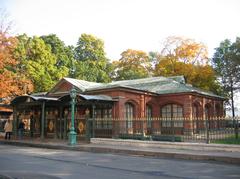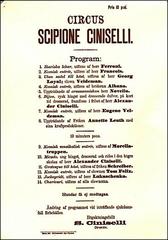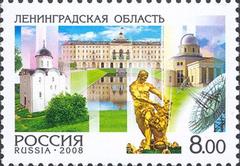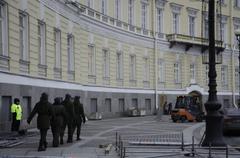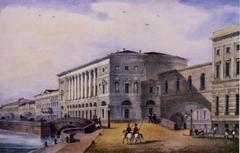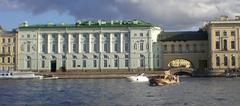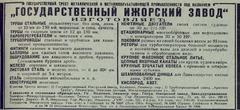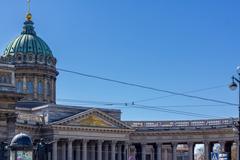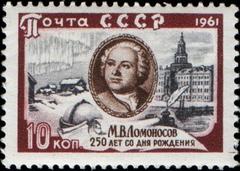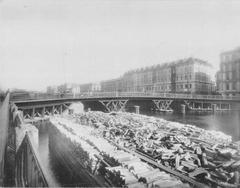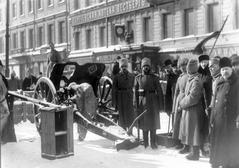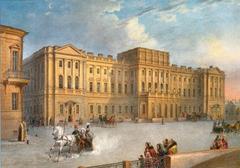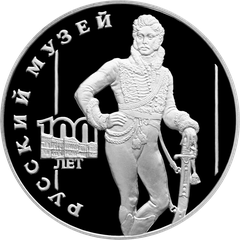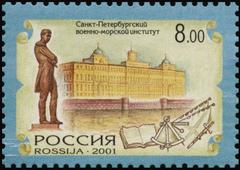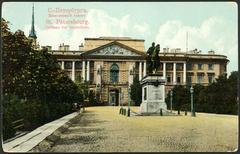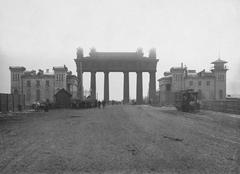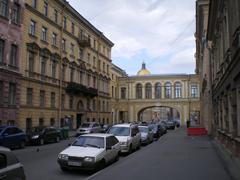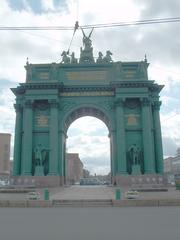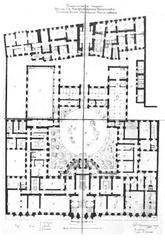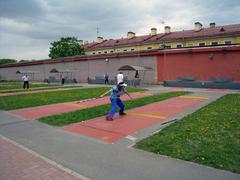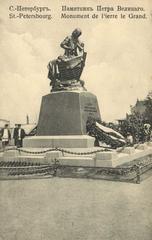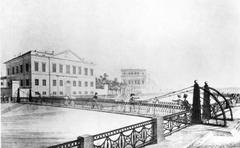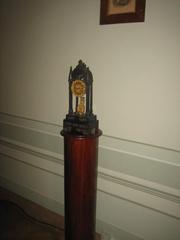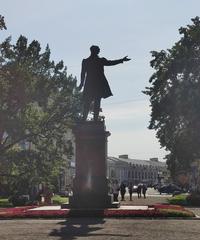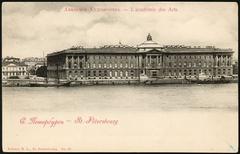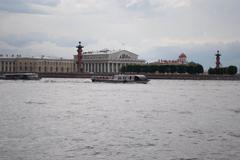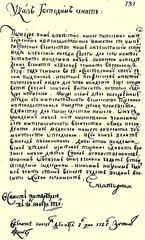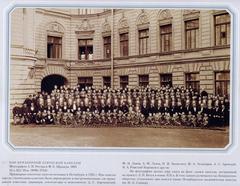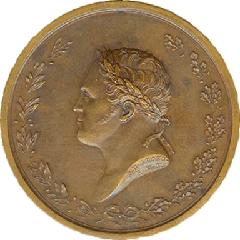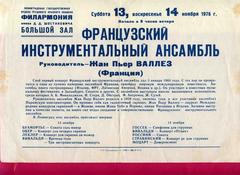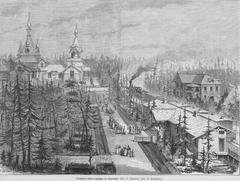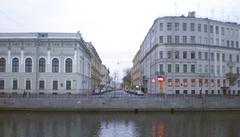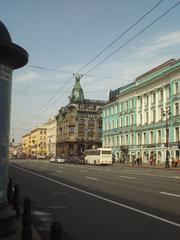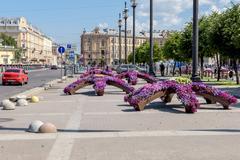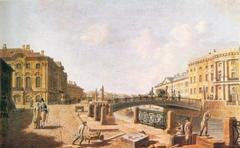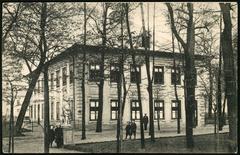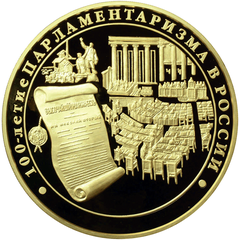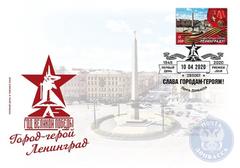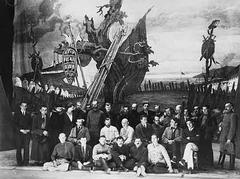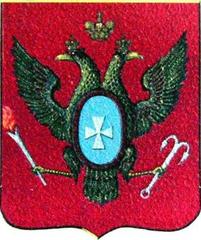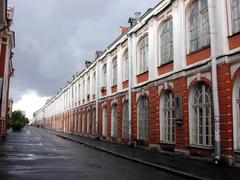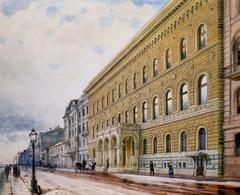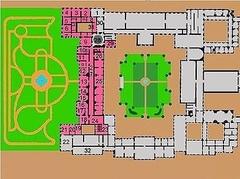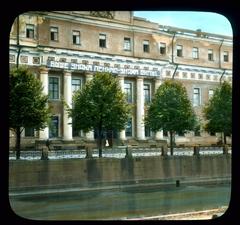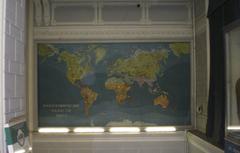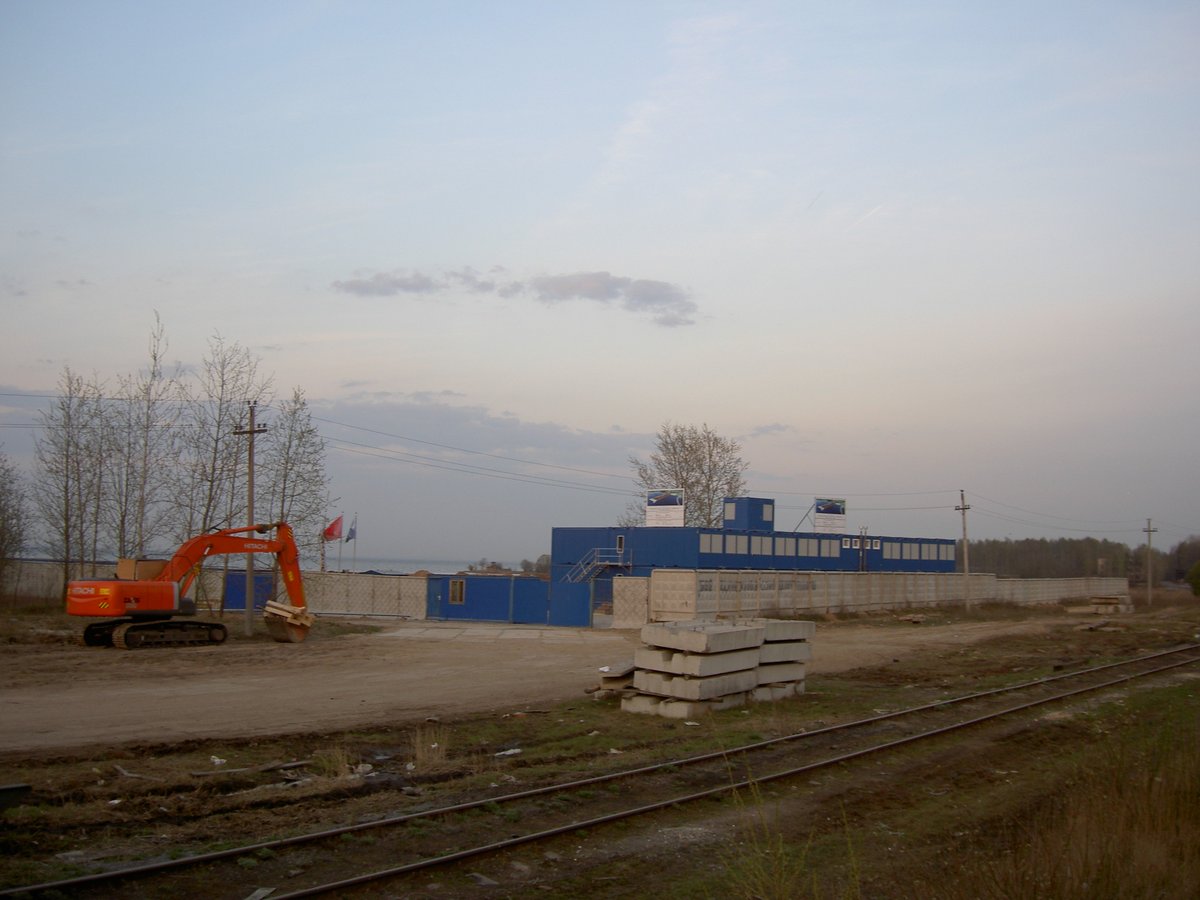
Lomonosov Port Visiting Hours, Tickets, and Historical Sites Guide
Date: 15/06/2025
Introduction to Lomonosov Port and Its Historical Significance
Situated on the southern coast of the Gulf of Finland, just west of Saint Petersburg, the Port of Lomonosov (formerly Oranienbaum) is a compelling destination that unites Russia’s imperial legacy, vibrant maritime traditions, and modern port operations. Founded in the early 18th century by Peter the Great as both a naval gateway and imperial residence, Lomonosov has transformed over time into a rich cultural site and an active logistics hub. Its history is etched into landmarks such as the Oranienbaum Palace and Park Ensemble—a UNESCO World Heritage Site renowned for its Baroque architecture and untouched gardens, which survived World War II without significant damage. The port itself offers panoramic views of the Gulf of Finland, ferry links to Saint Petersburg and neighboring ports, and a window into Russia’s maritime and industrial past.
This guide provides visitors with up-to-date information on Lomonosov’s visiting hours, ticketing procedures, accessibility, and recommended tours. It spotlights cultural and historical sites including the Grand Menshikov Palace, Chinese Palace, Sliding Hill Pavilion, local churches, museums, and public art installations. Practical travel advice, transportation details, and highlights of seasonal events are also included, ensuring a fulfilling exploration of Lomonosov’s unique blend of history, culture, and maritime significance. For further details, consult resources like the Peterhof Museum Complex, the Oranienbaum Museum, Saint-Petersburg.com, and Wikipedia.
Table of Contents
- Introduction to Lomonosov Port and Its Historical Significance
- Early Foundations and Imperial Origins
- Oranienbaum Palace and Park Complex
- Industrialization and Maritime Development
- The Port During the Soviet Era and World War II
- Postwar Reconstruction and Modern Significance
- Architectural and Cultural Landmarks Near the Port
- Lomonosov Visiting Hours, Tickets, and Travel Tips
- Transportation and Accessibility
- Preservation and Future Prospects
- FAQ
- Exploring the Port of Lomonosov: History, Visitor Info, and Economic Significance
- Welcome to the Port of Lomonosov: Visitor Guide
- Discover Lomonosov: Complete Guide to Historical Sites
- Summary and Visitor Tips
- References and Further Reading
Early Foundations and Imperial Origins
Lomonosov, originally named Oranienbaum, was established in 1710 by Peter the Great as a strategic port and imperial estate. The name “Oranienbaum” (from the German for “orange tree”) symbolized Russia’s engagement with European culture (Wikipedia: Lomonosov, Russia). The estate was granted to Alexander Menshikov, Peter’s closest associate, and quickly became a center for Russia’s ambitions on the Baltic Sea.
Oranienbaum Palace and Park Complex
The Oranienbaum Palace and Park Complex is the crown jewel of Lomonosov and a UNESCO World Heritage Site. Notably, the site survived the devastation of World War II, preserving its architectural and horticultural splendor (Wikipedia: Lomonosov, Russia). The complex includes the Grand Menshikov Palace, Chinese Palace, and Sliding Hill Pavilion, all surrounded by expansive landscaped gardens.
Visiting Hours & Tickets
- Hours: Open Tuesday–Sunday, 10:00 AM–6:00 PM (closed Mondays)
- Tickets: Adult admission is approximately 500 RUB; discounts for students and seniors
- Purchase: Tickets are available onsite and online at the Peterhof Museum Complex website
Guided Tours and Photography
Guided tours are offered in multiple languages and enrich the visitor experience with historical context and architectural insights. Photography is permitted in outdoor areas and designated interiors, with especially scenic vantage points around the palaces and waterfront.
Industrialization and Maritime Development
Throughout the 18th and 19th centuries, Lomonosov’s port evolved into a commercial and industrial center. Enterprises such as Mikhail Lomonosov’s colored-glass factory flourished, and the port supported both trade and passenger movement. The arrival of the railway further integrated Lomonosov into the Saint Petersburg region’s industrial fabric (Wikipedia: Lomonosov, Russia).
The Port During the Soviet Era and World War II
During the Siege of Leningrad, Lomonosov’s port played a pivotal defensive and logistical role through the Oranienbaum Bridgehead. The town and its historic sites, remarkably, remained largely undamaged, and in 1948, Oranienbaum was renamed Lomonosov in honor of the scientist and polymath Mikhail Lomonosov.
Postwar Reconstruction and Modern Significance
In the postwar era, Lomonosov integrated its historical charm with modern amenities. While large-scale commercial shipping has diminished, the port still serves as a base for ferries, pleasure boats, and seasonal passenger services, linking visitors to nearby attractions such as Peterhof and Kronstadt (Saint-Petersburg.com: Lomonosov).
Architectural and Cultural Landmarks Near the Port
Aside from the main palaces, visitors can explore historic port warehouses, customs buildings, and original harbor structures. Architectural highlights feature designs by Giovanni Maria Fontana, Bartolomeo Rastrelli, and Antonio Rinaldi, adding depth to the town’s imperial legacy.
Lomonosov Visiting Hours, Tickets, and Travel Tips
- Seasonal Port Tours: Available during warmer months, offering insights into the harbor’s history and views of the Gulf of Finland.
- Accessibility: Ramps and adapted facilities make the site accessible for wheelchair users.
- Dining and Accommodation: The area hosts local restaurants, cafes, and guesthouses, providing authentic regional experiences.
Transportation and Accessibility
- By Train: Suburban trains from Saint Petersburg’s Baltic Terminal to Oranienbaum Station (about 45 minutes) (Wikipedia: Lomonosov, Russia).
- By Water: Hydrofoil services connect Lomonosov with central Saint Petersburg and coastal destinations during the navigation season.
- Local Transport: Pedestrian-friendly streets, as well as buses and taxis, support easy exploration.
Preservation and Future Prospects
Ongoing restoration ensures the survival of the Oranienbaum Palace and port infrastructure (Saint-Petersburg.com: Lomonosov). As tourism grows, Lomonosov is poised to serve as a key gateway to the wider cultural landscape of Saint Petersburg.
FAQ
Q: What are the visiting hours for Oranienbaum Palace?
A: Tuesday–Sunday, 10:00 AM–6:00 PM; closed on Mondays.
Q: How can I buy tickets?
A: Tickets are available onsite and at the Peterhof Museum Complex website.
Q: Are guided tours available?
A: Yes, in multiple languages; advance booking is recommended.
Q: Is Lomonosov accessible by public transport?
A: Yes, by suburban train and seasonal hydrofoil services from Saint Petersburg.
Q: When is the best time to visit?
A: Late spring to early autumn offers the best weather and access to tours.
Exploring the Port of Lomonosov: History, Visitor Info, and Economic Significance
Historical and Geopolitical Context
Founded under Peter the Great, the Port of Lomonosov has long been a strategic link between Russia and Western Europe, supporting Saint Petersburg’s status as Russia’s “window on Europe” (Britannica). Today, it remains a symbol of maritime heritage and regional economic vitality.
Visitor Information
- Hours: Public waterfront access generally available 9:00 AM–6:00 PM; operational port areas are restricted.
- Tours: Occasional guided tours focus on port history and facilities; book in advance.
- Accessibility: Reachable by public transport and car; check for event-related restrictions.
- Photography: Allowed in public areas, with excellent Gulf of Finland viewpoints.
Getting There
- Public Transport: Buses and marshrutkas from Saint Petersburg.
- Car: Well-connected by regional roads.
- Rail: Convenient suburban train service.
Nearby Attractions
- Oranienbaum Palace and Park Ensemble: A must-see UNESCO site (Wikipedia: Oranienbaum, Russia).
- Gulf of Finland Walks: Ideal for scenic strolls and maritime views.
Economic Role
The port handles containers, bulk, and general cargo, supporting the regional economy and linking to Saint Petersburg’s road and rail networks (E-Tracking: Port of Lomonosov).
Operational Efficiency
As of April 2024, the average vessel stay is 1.0 day, reflecting efficient port operations (CEIC Data).
Regional Development
Lomonosov’s location at the Gulf of Finland’s head grants it strategic significance for trade and regional growth (E-Tracking).
Resilience
The port has adapted to global challenges by investing in digitalization and modern infrastructure (CEIC Data).
FAQ
Q: What are visiting hours for public areas of the port?
A: 9:00 AM–6:00 PM; operational areas are off-limits to the public.
Q: Are guided tours available?
A: Occasionally, through local operators.
Q: How do I reach the port?
A: By public bus, car, or train from Saint Petersburg.
Q: What else can I see nearby?
A: Oranienbaum Palace, coastal walks, and additional historical sites.
Welcome to the Port of Lomonosov: Visitor Guide
Location and Overview
Situated 30 km west of Saint Petersburg in Leningrad Oblast, the Port of Lomonosov is accessible by road and rail (TradeFord). Its proximity to major city attractions makes it an ideal stop for travelers.
Visiting Hours and Ticket Information
- Operating Hours: 8:00 AM–6:00 PM, year-round; may extend during peak season.
- Tickets: Purchase ferry and cruise tickets at the passenger terminal or online; for larger cruises, check the Passenger Port of Saint Petersburg (Port Facilities).
Facilities and Accessibility
- Amenities: Waiting areas, restrooms, ticketing counters, and limited food options.
- Accessibility: Ramps and accessible restrooms provided; contact ahead for special assistance (TradeFord).
Local Attractions
- Oranienbaum Palace and Park Ensemble: A highlight for visitors interested in imperial Russia.
- Dining: Local cafes and restaurants offer Russian and European cuisine.
Travel Tips
- Best Time to Visit: Summer for optimal weather and passenger services.
- Tours: Guided walks and boat tours of the town’s heritage can be arranged locally.
- Photography: Coastal and architectural views abound.
Contact Information
- Port Administration: +7-812-422-8215
Official Website - Map and Directions: Location
Discover Lomonosov: Complete Guide to Historical Sites
Oranienbaum Palace and Park Ensemble
A UNESCO World Heritage site, the Oranienbaum Palace and Park Ensemble was founded by Prince Alexander Menshikov in the 18th century. The complex includes:
- Menshikov Palace: Petrine Baroque architecture and historical exhibitions.
- Grand Palace: Rococo interiors and period collections.
- Chinese Palace: Chinoiserie interiors and porcelain collections.
- Sliding Hill Pavilion: Unique winter entertainment venue.
Surrounding parks span 170 hectares, featuring ponds, sculptures, and walking paths (Oranienbaum Museum).
Religious and Architectural Heritage
- Cathedral of St. Michael the Archangel: Neoclassical design with gilded domes.
- Church of St. Peter and St. Paul: Peaceful historic interior.
Museums and Exhibitions
- Lomonosov Local History Museum: Showcases the town’s history (official site).
- Palatial Exhibitions: Regular art and cultural displays.
Public Art and Monuments
- Samson Fountain: A symbol of imperial grandeur.
- Neoclassical Sculptures: Triton, Merkuriy, Apollo Belvedere, and more.
- Stone Bench: Scenic viewpoint.
Maritime Heritage
The port’s historic piers offer views of the Gulf and commemorate the town’s naval history.
Parks and Nature
- Oranienbaum Park: Ideal for recreation and seasonal festivals.
- Coastal Walks: Picturesque paths along the Gulf of Finland.
Visiting Lomonosov: Hours, Tickets, and Accessibility
- Opening Hours: Most sites open daily 10:00 AM–6:00 PM; check official website for updates.
- Tickets: 500–700 RUB for combination entry; park admission is free.
- Guided Tours: Available in English and Russian.
- Accessibility: Main paths accessible; some historic interiors may be challenging.
Seasonal Events
- White Nights Concerts: June–July classical and folk music.
- Historical Reenactments: Periodic imperial court life displays.
- Local Markets: Regional crafts and cuisine.
Getting There
- Train: 50 minutes from Saint Petersburg’s Baltiysky station.
- Bus/Car: Well-connected regional transport.
Nearby Attractions
- Peterhof Palace: Renowned for its fountains.
- Kronstadt: Naval town with museums and cathedral.
Summary and Visitor Tips for Lomonosov Port
Lomonosov offers a blend of imperial history, maritime tradition, and natural scenery, all easily accessible from Saint Petersburg. From the Oranienbaum Palace to the bustling port and local festivals, visitors can experience Russia’s past and present in one destination. Plan your visit around official hours, ticket availability, and seasonal highlights. Utilize digital resources like the Audiala app for the latest updates and interactive experiences.
Key resources for planning include the Peterhof Museum Complex, Port of Lomonosov administration, and Saint-Petersburg.com. Take advantage of these tools to enhance your visit to this remarkable gateway to Saint Petersburg’s history and maritime heritage.
References and Further Reading
- Wikipedia: Lomonosov, Russia
- Peterhof Museum Complex
- Saint-Petersburg.com: Lomonosov
- Britannica: St Petersburg, Russia
- E-Tracking: Port of Lomonosov
- CEIC Data: Port Congestion Lomonosov
- TradeFord: Port of Lomonosov
- Port of Lomonosov Administration
- Port Facilities: Passenger Port of Saint Petersburg
- Oranienbaum Museum Official Site
- MarineLink: Lomonosov Port
